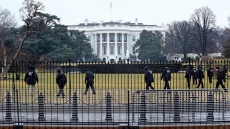OTTAWA — It appears the Conservative government is open to the idea of changing the way it tries to offset the high cost of food in the North.
The department that oversees the beleaguered Nutrition North program has posted a notice of proposed procurement, asking for someone to come up with different ways of providing northerners with the federal food subsidy.
"The Department of Indian Affairs and Northern Development has a requirement to develop subsidy models and support an engagement with communities for the Nutrition North Canada Program in 2015-16," it says.
The notice, posted Monday, did not elaborate on the nature of any possible changes to Nutrition North.
Aboriginal Affairs Minister Bernard Valcourt's office did not answer specific questions about the notice. Instead, spokeswoman Andrea Richer sent a generic, four-line response that mentioned the amount of money the government is spending on Nutrition North and the work of its advisory board.
"We are also working with the Nutrition North Canada advisory board to engage with northerners, retailers and suppliers on ideas to keep the program on a sustainable path including increased operating efficiencies and other program improvement proposals," Richer wrote in an email.
"These suggestions will be used to develop a range of options to help the program stay on a sustainable path while increasing healthy food consumption in the North."
Nutrition North — which replaced the old Food Mail program in 2011 — is intended to help defray the cost of nutritious food in the North by providing retailers with a subsidy that they are supposed to pass on by cutting food costs for consumers.
But the $60-million annual food subsidy — to which the government recently added another $11.3 million for the program's 2014-15 budget and a five per cent annual escalator in future years — has been under scrutiny ever since auditor general Michael Ferguson's fall report in November.
The audit revealed that Aboriginal Affairs is largely in the dark about whether Nutrition North actually does anything for the people who need it the most. That's partly because the department has not required merchants to report their profit margins, which over time would indicate whether the full subsidy is being passed on to consumers.
Ferguson's team also heard that sometimes the subsidy exceeds the very shipping costs it is meant to defray.
The department now says that as of April 1, retailers will have to provide information on their current and long-term profit margins.
The audit also flagged another glaring problem with the subsidy.
Nutrition North gives retailers a subsidy based on the weight of eligible foods shipped to eligible communities. However, the auditor general found Aboriginal Affairs choose eligible communities based not on need, but on whether they had year-round road access and if they had used the Food Mail program.
Aboriginal Affairs told Ferguson's team it has looked at expanding the full subsidy to around 50 fly-in northern communities, but doing so would increase the cost of the program by $7 million a year.





